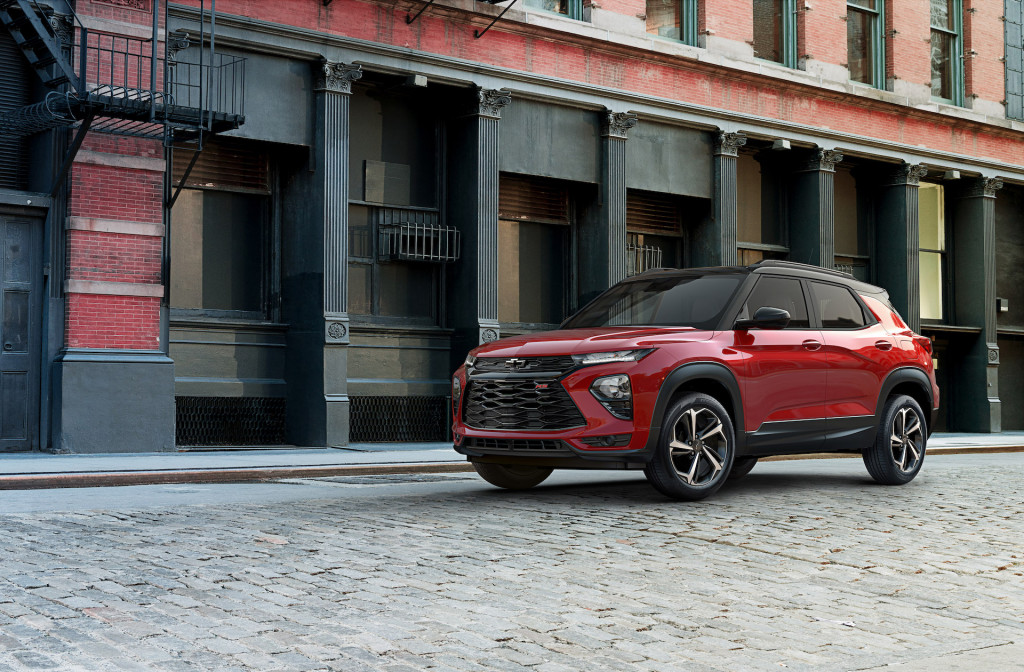The future for General Motors' cars and crossovers began Wednesday with the announced 2020 Buick Encore GX and Chevrolet Trailblazer crossovers.
That's because the two crossovers, which will be built at GM's facility in Korea, will be underpinned by common platform components that may eventually comprise the framework for millions of cars and crossovers by the next decade.
The Trailblazer and Encore GX are the first vehicles to arrive with GM's new unified common components, dubbed Vehicle Set Strategy. The components that feed into four main platforms, which should eventually include front- and rear-wheel drive vehicles, crossovers, and body-on-frame trucks and SUVs, were announced five years ago as a cost-saving measure that could save GM billions in production and development expenditures. Last year, GM announced that VSS and dedicated EV platforms would serve as the basis for more than 75 percent of its vehicles early next decade.
VSS will serve as the basis for four main platforms that will use similar components, such as HVAC, electrical architecture including infotainment, and substructures. The VSS-R platforms will be the basis for rear-wheel drive cars such as the next-generation Camaro. The VSS-F platforms will be used for front-drive cars such as the Malibu. VSS-S will be used for crossovers including the Encore GX and Trailblazer, and VSS-T will underpin body-on-frame vehicles such as the Sierra 1500 and Yukon.
GM hinted Wednesday that the common components were flexible enough to scale up or down within vehicle classes and between brands and give GM unique architectures for seemingly related products. A spokeswoman for Buick said that the Encore GX will be built on a Buick-specific platform not shared with any other brand, including the seemingly related Chevy Trailblazer. GM typically does not comment on platforms and future products and declined to comment for this story.

2021 Chevrolet Trailblazer
The move to a common structure or family of structures echoes similar efforts from many other global automakers including Volkswagen, Renault, and Toyota, which made the move for many of their cars earlier this decade.
"It's a general trend across the industry. The industry is in one of its most capital-intensive periods (that) it ever has been, and finding scale is important," said IHS Markit Principal Analyst Stephanie Brinley. "The more you can share among your vehicles the less expensive they are to produce."
The initial risk to move to VSS for GM was substantial. According to various reports, GM CEO Mary Barra made the push shortly after she took over the automaker in 2014 and worked to convince investors that the billions in up-front costs would be realized when the cars hit the streets early next decade. In 2015, GM used 26 platforms globally to build roughly 9 million cars at dozens of sites around the world. If cut substantially to fewer than half, GM could save billions.

2020 Buick Encore GX
Brinley said many of the common components included in the architectures won't be in places buyers will ever see, and goes well beyond "brand engineered" cars of yesteryear.
"At the end of the day, the consumer gets a better product. You can look at GM’s product lineup and their brand differentiation is better than ever. The idea isn’t to throw another badge on top of the vehicles," she said.
Progress for automakers using new common components has moved fairly quickly. Instead of tooling one platform and churning through thousands of cars, VSS and other common components piece together similar pieces like Legos, Brinley said.
"It's not about the frame really, it's more about components," she said.
For the new Encore GX and Trailblazer, that may mean greater separation than the GMT360 platform that served as the basis for the Chevrolet Trailblazer and Buick Rainier could've ever delivered less than 15 years ago.



